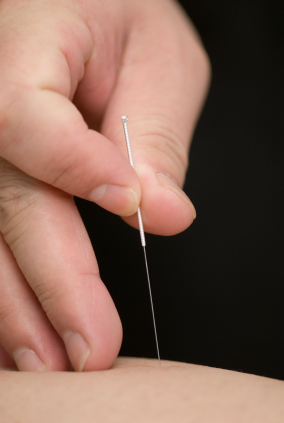Dry Needling vs. Acupuncture

By Chris Helmstetter, LAc
Dry needling is a hot topic in the acupuncture world right now. Why? Currently, all over the United States, Physical Therapists are using a technique called “dry needling” to treat pain. The problem is dry needling is acupuncture. And the PT’s are doing this procedure with very little training and putting patients at risk.
Dry needling is the use of solid filiform needles to release trigger points in muscles or connective tissue for the treatment of pain. Most people consider this acupuncture, but physical therapists have coined the term to try and differentiate dry needling from acupuncture. Acupuncture is not in physical therapist’s scope of practice, but they know it works to treat pain. Since they cannot treat patients with acupuncture without going through the same rigorous training that licensed acupuncturists go through, or even the shorter version for MD’s and chiropractors, they have called this procedure “dry needling” and claim it is based solely on Western medical theories and has nothing to do with Traditional Chinese Medicine. Acupuncturists entirely disagree. A solid filiform needle is an acupuncture needle. Needling trigger points to release pain is a technique of acupuncture called Ashi needling, and has been in practice for over 3000 years. Physical therapists have simply renamed an effective acupuncture technique in an attempt to incorporate it into their scope of practice.
In North Carolina only three professional groups may practice acupuncture: Licensed acupuncturists (LAc) that have over 3500 hours of training, physicians with 250 hours of training or chiropractors with 250 hours of training. All of these groups agree that the invasive technique of penetrating the skin with a solid filiform needle for therapeutic objectives is indeed acupuncture. And the North Carolina Acupuncture Licensing Board has published a position statement that dry needling is acupuncture and is not within the scope of practice of physical therapists.
Why such a division? The main issue is that the North Carolina Physical Therapy Board (NCPTB) is trying to increase the scope of practice of physical therapists without going through the NC legislative process and requesting a statue change. Instead they are re-branding an established technique and claiming it as their own. The problem with this approach is that the NCPTB currently states that physical therapists can practice dry needling with only 54 hours of training and with no certification process after that to determine proficiency. Can you imagine having a person with no experience and only 54 hours of training sticking a needle into your tight muscles for the first time? Neither can I.


